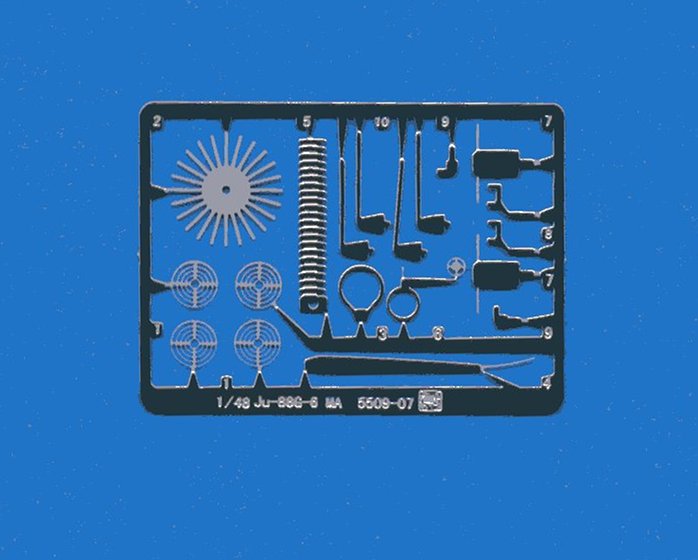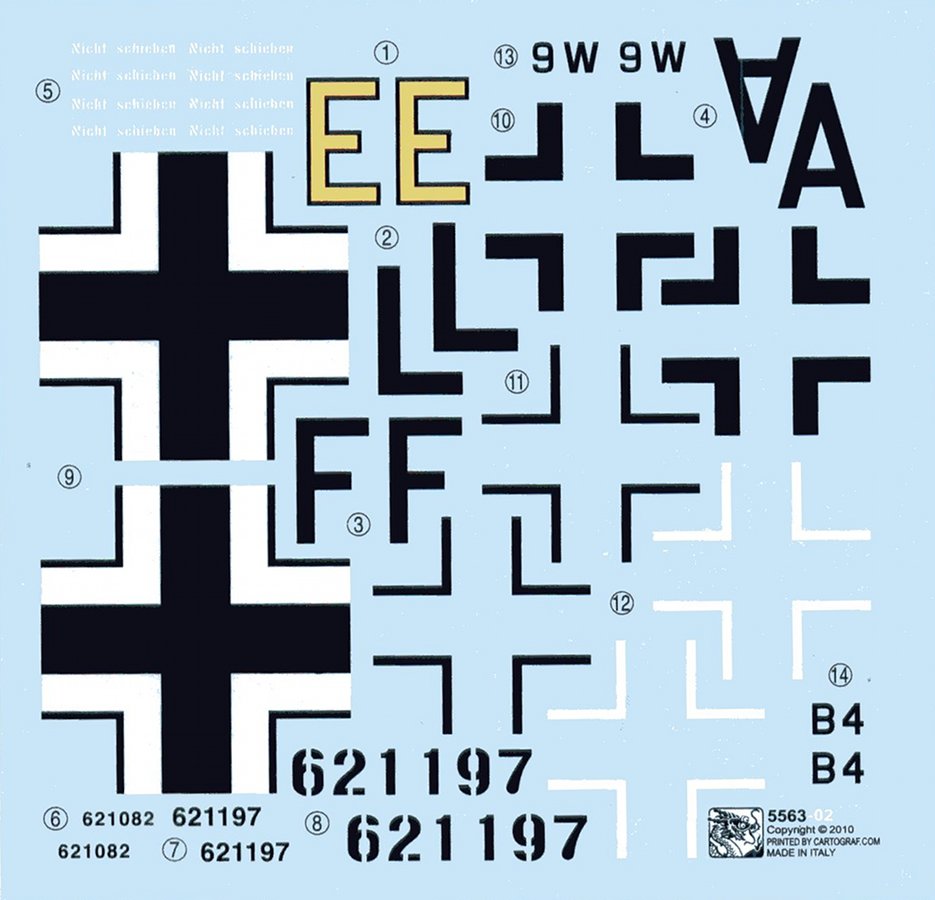Cyber-hobby 1/48 Junkers Ju-88 Nachtjager + Luftwaffe Pilots
By Jacob Russell
The Plane
The Junkers Ju-88G-6 Nachtjäger (Night fighter) entered production during mid 1944. The plane was powered by two 1,750 hp Junkers Jumo 213A inline liquid cooled engines which drove VS-111 paddle blade propellers. The G-6 could attain a speed of 360 mph and had a service ceiling of 31, 515 feet. It could be equipped with a single ETC 500 bomb rack under each wing for drop tanks or bombs. Many Ju-88G-6s carried upper fuselage MG 151 20MM Schräge Musik (Slanting Music or Jazz Music) in several different configurations; late production G-6s had these weapons installed just forward of the EZ 6 antenna cover, offset to starboard.
This is a reboxing of an earlier Dragon kit. The model comes in a stout cardboard box with a computer-generated profile of a G-6 Nachtjäger. The model consists of 219 parts, 7 of which are not used. There are 14 sprues of plastic parts, one of which is clear, and a photo-etched fret containing 20 parts. The sprues are bagged either separately or in pairs. The age of the tooling is revealed in the ejector pin marks on the external faces of parts such as the seats, landing gear and radio box faces, and in the softness of some of the details-panel lines, etc.
Some of the ejector pin marks are located in areas that are hard to remove, such as on the oleo covers on the landing gear. There is a minor amount of flash on some parts. Despite these flaws, my overall impression of the kit is positive. The cockpit is highly detailed and is convincingly busy. The large "greenhouse" of the canopy will showcase all that detail, so take your time painting it. The overall detail of areas such as the wheelwells, radar array, exhaust flame dampers, etc. is very well executed.
The wingtips are separate, as are the rudder, flaps, and ailerons. The clear parts are well molded albeit slightly thick. Some of the clear parts are not on the parts map but are called for on the instructions. The photo-etched sprue includes actuator arms for the wheelwell doors and flaps, gunsight and ammo for the cockpit machine gun, several aerials, and some details for the exhaust flame dampers. There are six pilot figures, two of which are standing. The other 4 figures are in various states of repose, and tables and chairs are included. They are also well molded.
The instructions themselves are well printed with a clear, logical, and easy-to-follow build sequence. Color callouts are for Model Master enamel and Gunze Mr. Color lacquer or Acqueous acrylic colors. The Cartograph decal sheet is crisply printed and in register, and includes decals for two different G-6 night fighters:
3./NJG 101, Praha Gbell Airfield, 1945. This plane was painted in overall RLM 77 Light Grey with RLM 74 Grey Green/RLM 75 Grey Violet splotches. Squiggles in RLM 83 Dark Green were applied on top of the 74/75/77. The spinners were painted RLM 70 Black Green. The starboard engine nacelle was from another aircraft and lacks the RLM 83 squiggles. The canopy frames are either RLM 66 or 74.
4./NJG 4, 1945. This plane was painted in overall RLM 77 with 74/75 splotches. The underside of the wings, horizontal stabilizers, and forward fuselage (including the gun pod) were painted RLM 22 Black. The spinners were RLM 70 Black Green with white spirals. The canopy frames are either RLM 66 or 74.
Accuracy
I laid the fuselage, wing halves, and wing tips over the 1/48th scale plans for a Junkers Ju-88C-6 (which had a smaller fin and rudder than the G-6) from Kagero Publication's Junkers Ju-88 Volume 3, and these parts matched the plans exactly. I don't know if these plans are regarded as the most accurate, but I had them so I used them. Close enough for me.
Conclusion
This is a great kit which I highly recommend. You can build it out of the box and achieve a good result, or you can go to town with help from the aftermarket. Either way, if you use the kit decals, you will have a great chance to show off your airbrush painting skills-or the glaring lack of them! With the addition of the pilot figures, tables, and chairs, you have the beginnings of a very convincing diorama.
I'd like to express my sincere thanks to Jon Fincher, who gave me his last raffle ticket from the IPMS/Vancouver, BC show 2 weeks ago, which is how I got the kit. Thanks, Jon!
References
Junkers Ju-88 in Action, Part 2, Aircraft Number 113, by Brian Filley, Squadron Signal Publications, 1991.
Junkers Ju-88, Volume III, by Krystof Janowicz, Kagero Publications, 2005.


